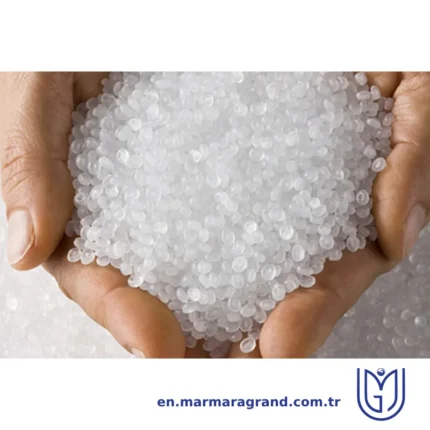Bottle Grade
Polyethylene Terephthalate (PET) is a versatile thermoplastic polymer widely used in the packaging industry, particularly for bottle manufacturing. PET bottle-grade resin is a specialized type of PET formulated to meet the requirements of beverage, food, and pharmaceutical packaging. One of the key advantages of PET bottle-grade material is its food-safe quality, ensuring compliance with global regulatory standards like those set by the FDA (Food and Drug Administration) and EFSA (European Food Safety Authority). With growing concerns about sustainability, PET bottle-grade materials are evolving to incorporate higher percentages of recycled content while maintaining their structural integrity and safety.
1.StructurePET (Polyethylene Terephthalate) is a semi-crystalline thermoplastic polymer belonging to the polyester family. The structure of PET bottle-grade material is based on long-chain polymer molecules formed through polycondensation of terephthalic acid (TPA) and ethylene glycol (EG). The repeating unit in PET is: {-O-CH_2-CH_2-O-CO-C_6H_4-CO-} This structure consists of:
- Ester groups (-COO-) → Provide flexibility and durability
- Benzene rings (C₆H₄) → Contribute to rigidity and strength
- Ether bonds (-O-) → Help in processability and thermal stability
2.PropertiesPET (Polyethylene Terephthalate) bottle-grade resin possesses a unique combination of physical, mechanical, thermal, chemical, and barrier properties, making it the preferred material for beverage and food packaging. It is highly transparent, lightweight, and has a smooth surface, providing an attractive and glossy finish for bottles. Mechanically, PET is strong, tough, and resistant to impact and stress-cracking, ensuring durability during handling and transportation. Its flexibility allows easy molding into various bottle shapes while maintaining high stiffness for structural integrity. Thermally, PET has a glass transition temperature of approximately 75–80°C and a melting point of around 250–265°C, making it stable under moderate heat conditions. Chemically, it exhibits excellent resistance to acids, oils, and solvents while maintaining hydrolytic stability in humid environments. Additionally, PET is non-toxic and food-safe, meeting regulatory standards such as those set by the FDA and EFSA. Its superior barrier properties help preserve the quality of packaged products by limiting oxygen and carbon dioxide permeability and preventing moisture absorption.A key advantage of PET bottle-grade material is its recyclability, as it is 100% recyclable and can be processed into recycled PET (rPET), promoting sustainability and reducing environmental impact. These properties collectively make PET an ideal choice for water bottles, soft drink containers, juice packaging, and other consumer goods that require clarity, strength, and food safety.
3. Applications of Bottle Grade PETBottle-grade PET is used across multiple industries due to its versatility and safety.
1. Food & Beverage Industry
Soft Drink & Water Bottles – Carbonated and non-carbonated beverages Dairy & Juice Containers – Milk, yogurt drinks, and fresh juices Edible Oil & Condiment Packaging – Cooking oils, sauces, and vinegar2 Pharmaceutical & Healthcare
Medicine Bottles – Liquid syrups and vitamin supplements Personal Care Packaging – Shampoo, lotion, and cosmetic containers3 Industrial & Chemical Applications
Household & Industrial Chemicals – Detergents, cleaning agents, and solvents Laboratory Containers – Sterile packaging for chemicals and reagents4 Sustainable Packaging & Recycled PET Products
Recycled PET Bottles – Used in textiles, automotive parts, and reusable packaging Eco-Friendly Packaging – Biodegradable and sustainable bottle solutions4. Advantages of Bottle Grade PETBottle-grade PET offers multiple benefits, making it the preferred material for packaging. Cost-Effective: Lower production costs compared to glass and metal Shatterproof & Durable: Reduces breakage risks in transportation and usage Lightweight: Decreases shipping weight and carbon footprint Versatile & Moldable: Easily shaped into different bottle designs Safe for Food Contact: Approved by FDA and EFSA for direct food and beverage use Eco-Friendly: Supports recycling and sustainable initiatives
5. Disadvantages of Bottle Grade PETDespite its benefits, bottle-grade PET has some drawbacks: Environmental Concerns: Improper disposal leads to plastic pollution Heat Sensitivity: Deforms at high temperatures, limiting hot-fill applications Gas Permeability: Less effective than glass in preventing oxygen ingress Chemical Leaching (Low Risk): May release trace amounts of antimony oxide under extreme conditions Recycling Challenges: Requires advanced sorting and processing to maintain quality








